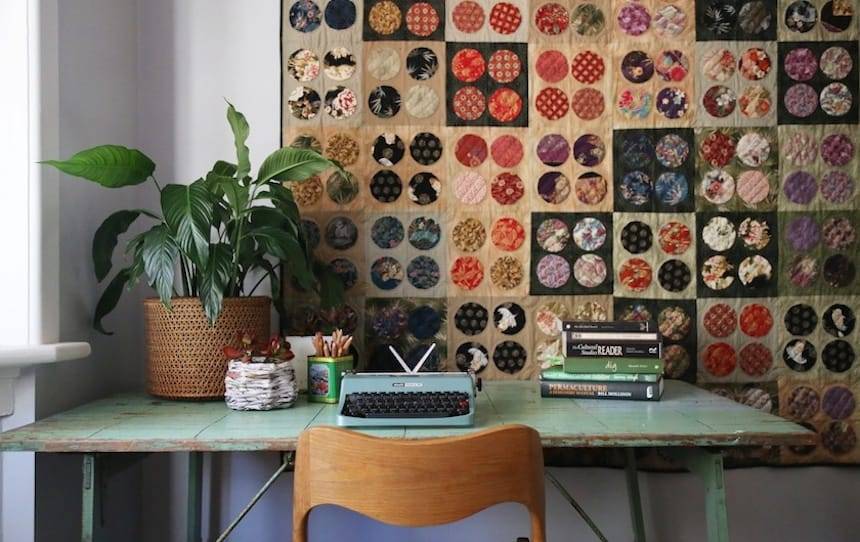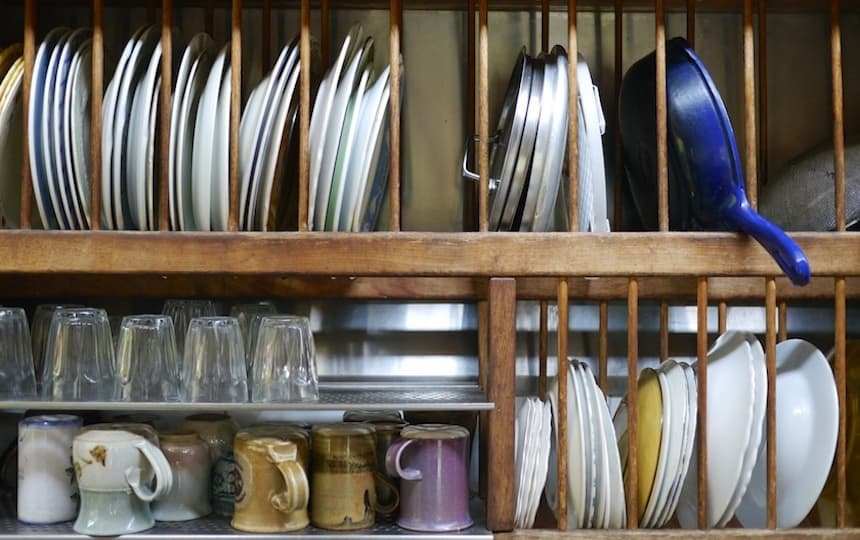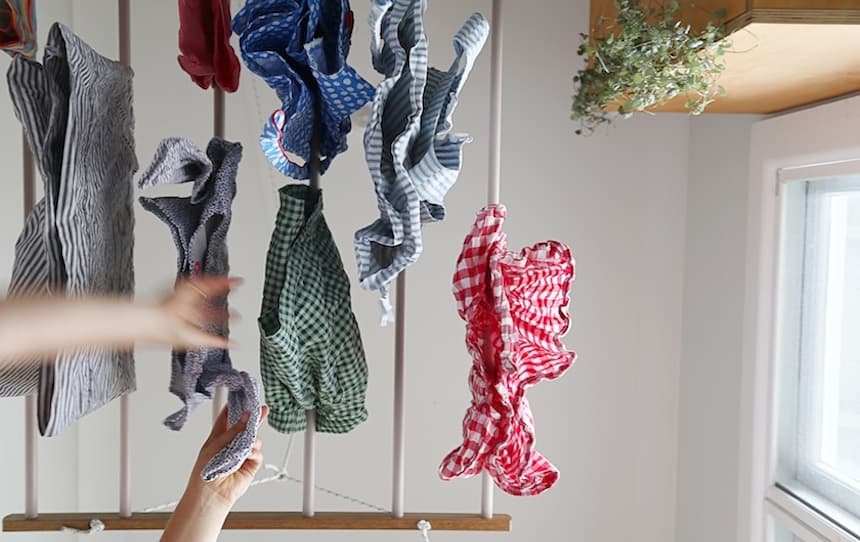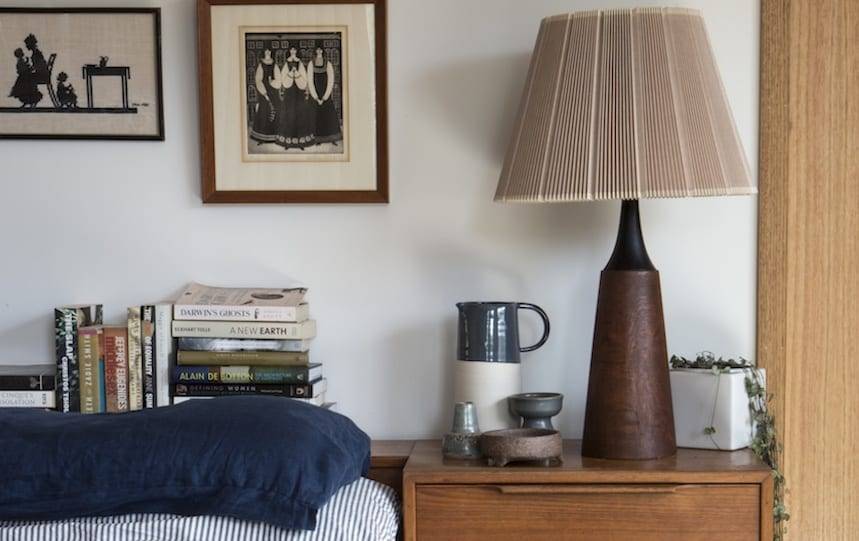From paring back the kitchen sink to getting your kids onboard your Marie Kondo-like mission, here are four easy ways to declutter your home.
A common scenario – you decide to declutter your home, spending hours sorting through all of your “stuff” and getting things to look ordered. In a day or two, it’s reverted to the same daunting tangle. ‘Why bother?’, you start to think.
However, home life cannot flourish in clutter: you have to wade through it to cook your meals, think your thoughts. Like all recurring problems, the clutter challenge requires multiple solutions.
An inspiration for me was the Bradley Method of weed management and naturalistic bush regeneration.
On their walks in the Sydney Harbour National Park the Bradley sisters, Joan and Eileen, noticed that weeds grew back fastest on the vulnerable, denuded soil.
They found that if they started where intact native vegetation was strongest, and trimmed weeds from its edges, healthy bushland would expand until invaders were shaded and crowded out. Their method became NSW-wide policy.
The message: find what’s working; allow it to expand at its own rate, and watch it prevail. Here are some steps to help you declutter your home.
Declutter the kitchen sink
I don’t let my clients move on to declutter other areas of their house until they’ve maintained their sink as the ‘zone of beauty and love’ for at least two weeks.
As always when making a system change, start by creating a vacuum, destabilising the existing system. Take away everything but the essentials, for example detergent, compost bin, squeezed-out cloth and brush. These should be of excellent quality, clean, coordinate harmoniously, and inspire even visitors to wash your dishes.
You don’t need a plastic take-away container to hold soggy cloths. Decant detergent into a colourful jug.
Follow the theme of what is beautiful for you. Display a vase of flowers from the garden: like attracts like, and dirty dishes will start to look out of place. From now on there should be no arguing over who washes the dishes.
Bring things front and centre
On Sunday afternoon, my stash of goodies from the farmers’ market gets washed, trimmed, sometimes part-cooked, and put into clear, uniform and non-distracting containers in my fridge.
I choose flat, deep containers, and stack them three storeys high, so that I can see what’s there. ‘Choose me, choose me!’, they say when I open the fridge.
No more spring onions wilting unseen in the bottom of the crisper. No more toast for lunch. Recipes suggest themselves every day; good combinations jump into my mind.
Get your kids onboard the declutter mission
Just like when you encourage beneficial insects, children can be sent on a rampage of tidying your house if you get the design right. Reframe the task so it goes with, not against, what they already love doing. No children? Your inner-child will do just fine.
Bus stop method
Put trays by each door: the ‘bus stops’. When children see something that doesn’t belong in a room, it gets put in the bus stop, for example pyjamas or toys. Then, when you or the children are going out that door on some other mission, see if there are any ‘passengers’ that want to go that way.
Winnable races
Take children into the back garden with an empty treasure chest each. Say ‘Whoever fills it up, with rubbish/weeds/ tomatoes … is the winner – Go!’ Don’t be the mother forced into nagging her children to help. Build in a measurable sense of progress.
Make ‘families’
Children love families, so challenge them to group objects. ‘Let’s pick a jar for the crayon family. Yes, of course we can draw them a letterbox for their house. Yes, making neighbourhoods is a great idea. Let’s make sure they are all home in time to have dinner together.’
Discarding versus creating no waste
When you start discarding – whether you sell the thing cheaply, take it to a charity shop, recycle it or put it in the rubbish bin – in the depths of your being a gnarly voice hisses, ‘Throw that out, and you die!’.
A typical urban dweller needs to discard at least half of their possessions. Until you do, your home won’t function optimally, and neither will you. How can you care for the earth, care for people and share what’s spare when you’re overwhelmed and ineffective; busy trying to hide the fact that you got tricked into gathering a houseful of junk.
It will take around six months of focused work, inviting friends to help, to declutter your home. It is best to do it this way, as one big project. You are designing a new system, and there will be lots of what looks like waste.
Thank each discarded object for what it taught you about what you never, ever need to buy again. After the right amount of wistful throwing-away sessions, the shopping appetite fades. The new life begins; a life where waste is designed out of the system.
Time to declutter your home?
So, if you’ve decided you want to get your uncluttered new life started, call a friend, and tell them your vision, and what you will do next to declutter your home.
The Japanese believe that each word has a soul, and once it’s uttered it’s already a real thing. Making intentions real by speaking them to someone has worked for me.
The impulse to change a deeply entrenched system is a precious, delicate thing, and can fade like a dream on waking. So get started: today rather than tomorrow.












